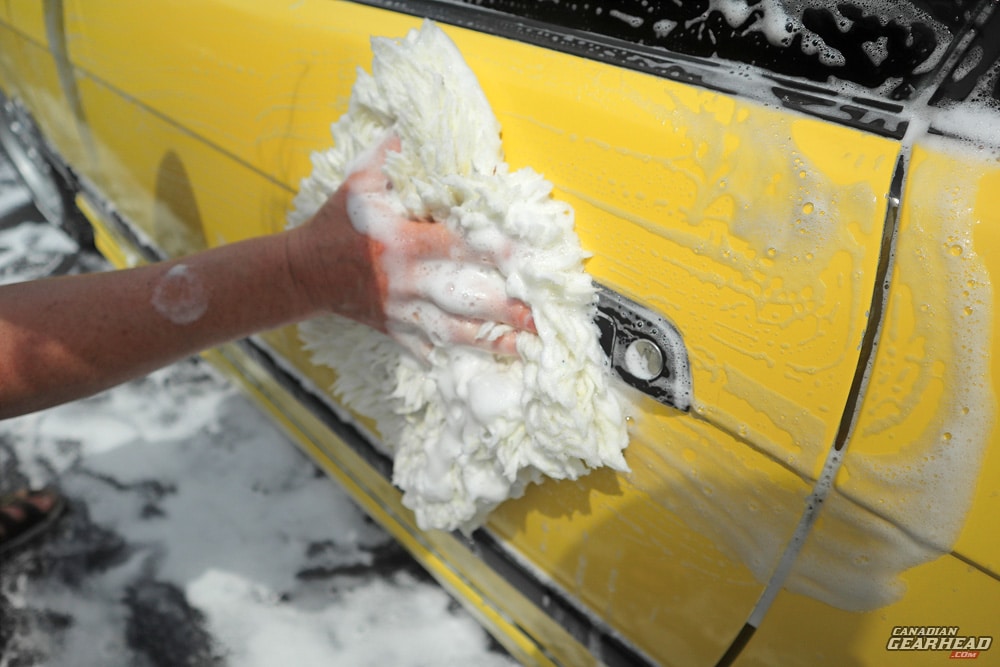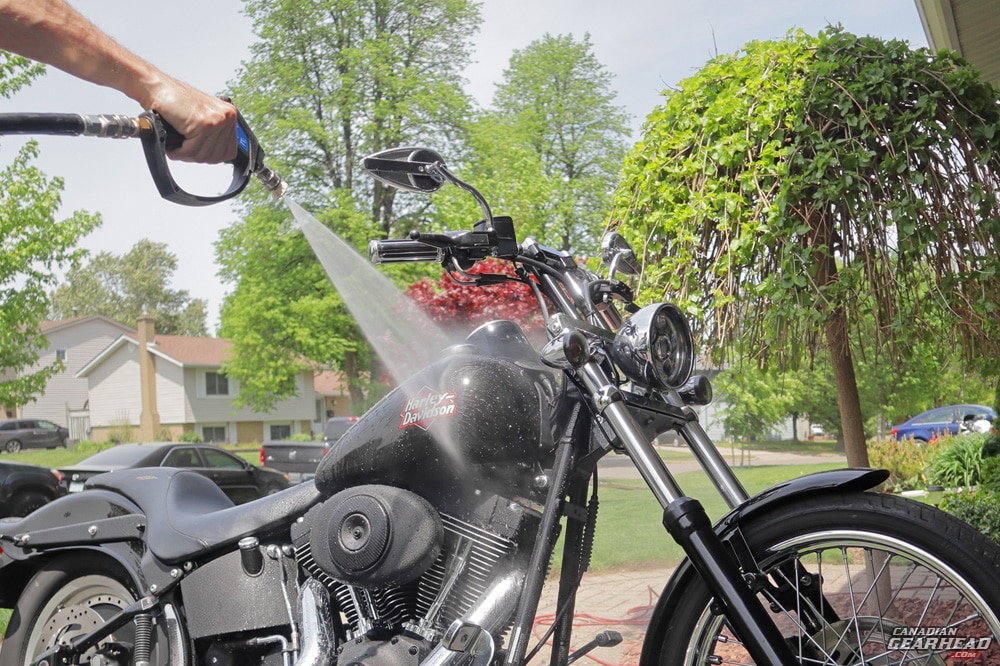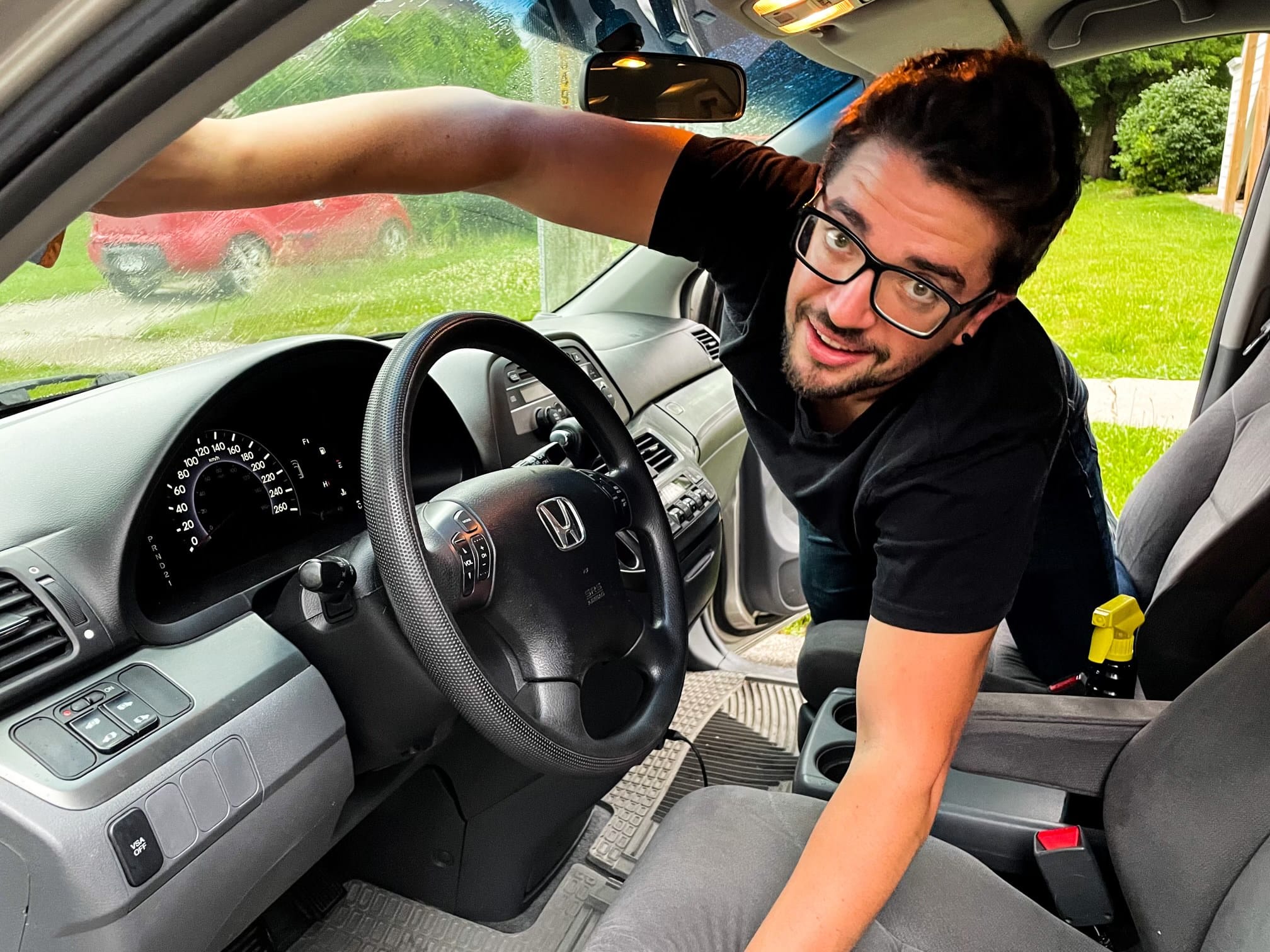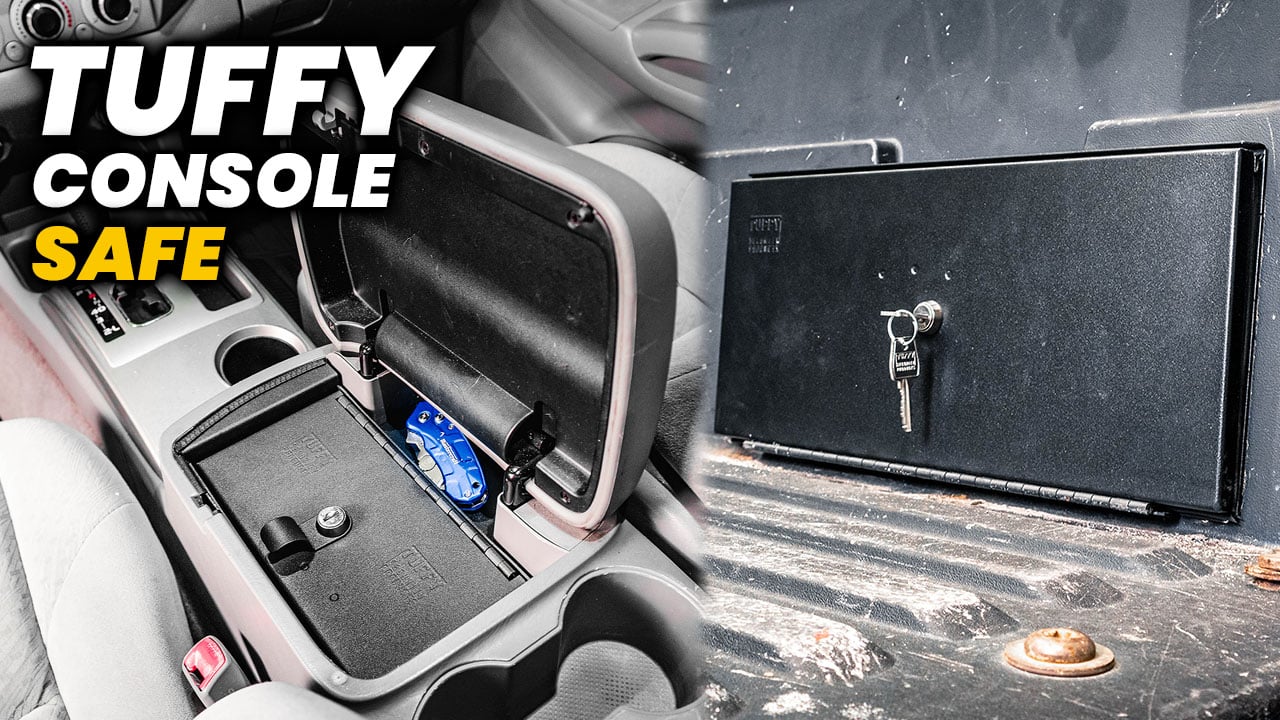When I was just starting out as a detailer, a friend of mine asked me to help him wash his new-to-him MazdaSpeed 3. I was excited to help him out by showing his new ride some love. Unfortunately, my inexperience led me to chase a “bug” on his front bumper.
Being young and dumb I decided to use the pressure washer to blow that sucker off the car. As it turns out the bug was actually a stone chip which quickly became a 2” x 2” section of bare plastic. Sorry Bobby.
My experience isn’t a unique one. The first result from a google search about the safety of pressure washing a car would make you think that simply looking at a pressure washer will strip all the paint off your car as well as the one next door.

Myths about using a pressure washer on your paint
I honestly can’t believe some of the warnings I’ve read online regarding the dangers of pressure washing your car.
One article I read stated that using a pressure washer could fling stones and other debris at your car’s paint. Another one warned a pressure washer would peel the paint off entirely. And yet another claimed using a pressure washer on your tire would weaken the rubber after a few seconds.
I highly doubt any of these authors have spent any time detailing cars. I imagine they watched Matt Leblanc obliterate a shed and a Volvo with a Karcher Ecomaster MK3 and decided all pressure washers will destroy a car.
The worst part about these claims was the half-truth with little context. Can you fling stones and debris toward your car with a pressure washer? Yes, if you aim the pressure washer at a stone on the ground you’ve effectively created an inaccurate water-powered Red Ryder. So wash your car on concrete where possible and avoid spraying the ground in a way that would kick up stones.
It’s perfectly safe to use a pressure washer on your paint. Now you might be saying “Wait a minute Jeremy, you just told us about how you took the paint off of Bobby’s front bumper with a pressure washer!” Nothing gets by you, does it? I most definitely caused damage to that Mazda. The problem was with how the pressure washer was used in that situation.
What went wrong:
Firstly, I did not correctly identify what I was attempting to remove from the front bumper. I also used the pressure washer irresponsibly. By pointing the nozzle mere inches away from the bodywork at a paint chip, I got what I had coming.
Will a pressure washer damage your car’s tires?
Absolutely not. This is another completely false claim.
Your tires are designed to resist UV degradation, support thousands of pounds while being inflated upwards of 30psi, and take high impacts from potholes and curbs all while spinning several hundred RPM at highway speeds. A little bit of water pressure during your Saturday morning wash isn’t going to weaken the tire’s structure.
Some detailers have wondered if using a pressure washer on the diverse layers of paint protection available is safe. Here’s my take:
Using a pressure washer on a clear bra or vinyl wrap
Using a pressure washer on a clear bra is considered safe as long as excessive pressure isn’t being used and the nozzle isn’t aimed near an edge. Aged vinyl or film might be riskier but that isn’t the pressure washer’s fault.
Using a pressure washer on ceramic coating, paint sealant, or wax
Typically, pressure washing is the recommended cleaning method for any paint protection products. It’s considered the safest method, as it removes the majority of contaminants before the surface is physically touched.
In any of these cases, be sure to consult the manufacturer or installer’s instructions before maintaining or cleaning. They could have very specific instructions based on their product that need to be followed for proper care or warranty specifications.

Reasons why pressure washers are perfectly safe to use
Pull up any youtube detailing channel and you’ll see a pressure washer is used in just about every video. This is because in most circumstances, a pressure washer is perfectly safe to use. It’s not just paint and wheels that can be safely cleaned with a pressure washer either although that is the most common use for these machines.
A pressure washer can prevent damage when washing a car if used properly. For instance, when a vehicle is covered with pollen or pine needles the pressurized water will blow the debris off the surface preventing it from being dragged across the surface and leaving small scratches behind.
The ability to use a foam cannon is an added benefit when washing the exterior of a car with a pressure washer. Applying soap to the vehicle before touching the surface with a wash mitt or microfibre towel adds lubricity and pulls dirt off the surface as it runs down and makes those satisfying plop sounds when it hits the ground.
A pressure washer is also a great tool to have in your arsenal when detailing the interior. That may sound slightly insane at first, but we all know you can’t just wash out your interior and call it a day. I’m referring to the floor mats here, especially rubber floor mats. A bit of scrubbing and a blast from the pressure washer will have your rubber mats looking as good as new.

I’ve used a pressure washer on filthy carpet mats before as well with a great deal of success. After years of use and abuse carpet floor mats can become clogged up with dirt and grime even if they are vacuumed regularly. A drill brush and upholstery cleaner can be used to agitate the fibers in preparation for a thorough rinse with the pressure washer.
I’ll typically follow that up with an extractor to get the majority of the water out of the mats before hanging them up to dry. I’ve learned to do this before starting on the rest of the interior detail. By the time I’m done, they’re nearly dry and ready to go back in the vehicle.
Getting all the grime off the undercarriage of your vehicle can be made easier with a little help from a pressure washer. This is easiest to accomplish if you can use a hoist to get under the vehicle. If that’s not an option for you there are attachments available to more easily wash the undercarriage without lifting the vehicle.

On modern cars, it’s generally safe to use a pressure washer on the engine bay as well.
Most electrical connectors are sealed, so getting water in them isn’t a major concern. Engine air intakes are designed to prevent water from getting into them as well. If you have an aftermarket intake on your car you may want to seal it with a plastic bag before beginning.
You could also cover the alternator for added protection, though it isn’t entirely necessary if you’re not drowning it during the wash.
Situations where a pressure washer can/will cause damage
There are some situations where using a pressure washer may cause damage. You must always know the condition of the paint, trim, and emblems of the vehicle you’re working on before you begin. Paint that is chipped will need special care – get too close to a chip and the high-pressure water could get under the paint and lift large sections of it off the car.
If the trim is beginning to lift around the corners, avoid using the pressure washer in that area. The only thing worse than trim lifting is a bare spot where the trim used to be. This goes for badges and emblems as well.
When I worked in the detail department of a Chrysler dealership, we would often run into trouble with the Chrysler badges on the Chrysler 200.
They were a two-piece badge and after a few years the adhesive of the blue inlay would fail and even the slightest bit of water pressure would send them flying across the shop. Be sure to pay attention to the condition of any vehicle before you flip the switch on your pressure washer.

Other areas to pay attention to are window, door, and trunk seals. Frameless doors are prone to allowing water to trickle into the cabin even when the seals are new and the windows are properly adjusted. This only gets worse as the seals age and windows have been incorrectly adjusted.
Generally, you won’t damage the vehicle if you examine the condition of the paint, trim, and emblems prior to beginning and avoid those areas. No matter the condition of the vehicle, keep in mind what close-up high-pressure water can do and avoid getting too close to the vehicle. 8 or so inches away from the surface is a good rule of thumb.
The most common way I’ve seen vehicles damaged isn’t actually because of using the machine too close to the surface or using the improper nozzle for the job. It’s actually a simple mistake, and I’ve made it before as well:
When fitting your wand with a new nozzle it’s important to aim the tip away from the vehicle before pulling the trigger for the first time.
If the nozzle isn’t properly seated, that first trigger pull will send it flying toward your pride and joy. Whether you’re working on a Hyundai or a Lamborghini, this simple step will save you countless times.
What PSI is considered too strong for your car?
Most pressure washers available at your local hardware stores probably don’t put out too much pressure to be considered safe for automotive use. Especially if you’re looking at the electric units in your Canadian Tire’s detailing section.
Most consumer-grade pressure washers put out 1,400 to 1,800 PSI. These numbers are well within the safe zone. Anything over 2,200 PSI should probably be avoided. As important if not more so than PSI is GPM (gallons per minute) You can have all the pressure in the world but it won’t do much good without adequate water flow.

Look for a machine that can flow 1.4 GPM or more, 2.0 to 2.4 GPM is widely considered the sweet spot. Lower PSI is a good trade-off for higher flow. Above 2.0 GPM you can get away with less than 1,000 PSI. The wand, hose, and nozzle you choose to use will affect actual pressure and flow. So what you read on the box may not reflect your setup.
What about a heated pressure washer?
Some of you may be wondering if a heated pressure washer is safe to use on a vehicle as well. While using warm water will greatly improve your washing experience, especially in the cold weather, I wouldn’t recommend one of those industrial heated pressure washers. If you want to raise the temperature of your car wash I would run a hot water line to your car wash area.
If you decide to go this route you’ll need to make sure you find a pressure washer that is designed for warm/hot water. Some pressure washers can handle water up to 60 degrees Celsius (That’s 140 in American). I personally would reduce that temperature a bit, and avoid using it on a car that’s been sitting in the cold to avoid thermal shock and shattered windows, but that’s just me.
Should you use a gas-powered pressure washer on your car?
In short, no. You shouldn’t use a gas-powered pressure washer on your car. Most of the gas-powered pressure washers on the market are well above a safe amount of pressure to be using on your car. These machines typically run in the 3,000 to 4,000 PSI range. Talk about excessive!
Not only are they overkill, but they’re also extremely noisy. I’m sure most neighbors wouldn’t love that firing up at 7 am on a Saturday morning. If you’re going to be washing your car at home regularly you might get to know the local law enforcement officers by name using this method. Not exactly something I’d recommend.
If you happen to live far away enough from your nearest neighbor and all you have is a gas-powered pressure washer, there may be a way to make it work. Some pressure washers have an adjustable pressure regulator with a dial gauge to indicate working pressure. This might allow you to decrease the pressure to a safe range.
The tip you use may also give you some control over the pressure. Using a nozzle with a larger diameter will decrease the water pressure exiting the wand. This may take some research as well as some trial and error to get the setup working for you, but the appeal of having one pressure washer to do your other household chores as well as washing your car is something I certainly understand.
Now that we’ve determined that they’re safe to use, head over to our other article to find out whether you actually need to use a pressure washer to clean your car.

Jeremy got his start in the automotive industry in 2012 as a detailer. He also tried sales and a role in the service department at a Chrysler dealership before deciding to become an automotive technician for Volkswagen. Read more about Jeremy:





Leave a Reply